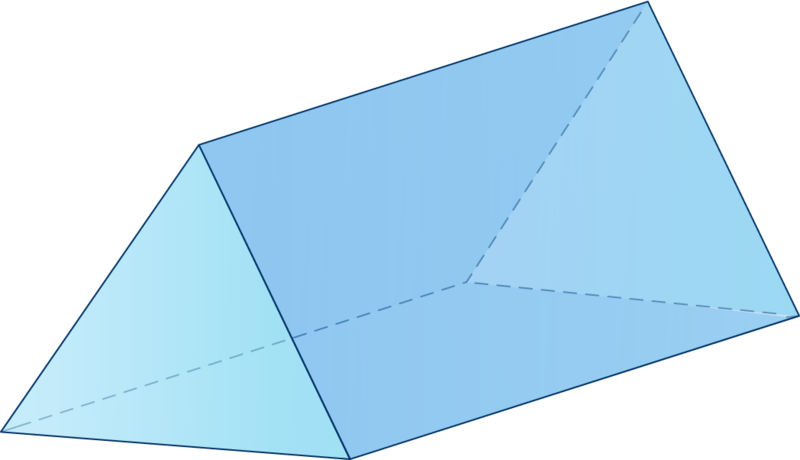Today we had a look at calculating the volume of 3D shapes. The general formula for finding the volume of a shape is:
Volume = Area of a Face
x Depth (or Height)
or more generally, V = A
x D
Now we know how to calculate the area of basic shapes, using the formulas in this table:
We can use these formulas to calculate the area of the face of our 3D shape. When we pick which face to calculate, we need to pick the face that has a constant profile throughout the shape. We need to pick the face so that if we were to cut the shape and take a cross section, the face would be the same dimensions, no matter where we cut it.
For example, take the following prism.
If we wanted to find the volume of this, we would pick the triangle as our face, because at any point along this prism, we will always have that triangular cross section. We would not pick one of the rectangular faces, because they are not a constant cross section throughout the shape.
Once we know the area of the triangular face, we simply multiply this by the depth of the prism and we will have the volume.
Another example could be this pentagonal prism:
We would pick the pentagonal face as our face to use, since at any point along the shape it will still have this as a cross section. Again, once we have the area of this face, we can then multiply it by the depth of the prism and get the volume.
So for example, find the volume of the following prism:
First, we will find the area of the face of this prism. In this case, we will use the from face. This is a rectangle with dimensions of 10cm and 4 cm. The area of this is:
A = 10cm x 4cm
A = 40cm square
Now that we have the area of the face, we can simply multiply this by the depth of the shape. In this case it is 17cm deep, so we get:
V = 40cm square x 17cm
V = 680 cubic centimeters.
Our units for volume are cubed. For example we may have cubic millimeters, cubic centimeters, cubic meters, cubic kilometers, etc. These are written as mm3, cm3, m3, km3 , etc
One last important point is that generally when we talk about volume in the 'real world' we would use the units of milliliters (mL) or liters (L). To convert between our units that we calculate in (i.e. cubic centimeters) and these 'real world' units, we use the following conversion:
So if a prism has a volume of 45 cubic centimeters, we know it also has a volume of 45mL.
It is also important to remember that 1L is 1000mL.
I have uploaded a worksheet into the "Worksheets" tab, so work through that. I need that finished by Thursday's lesson, because we will use Thursday's lesson as a revision lesson for a test coming up.
As always, if you have any questions comment on this post, or email or chat to me in person.















